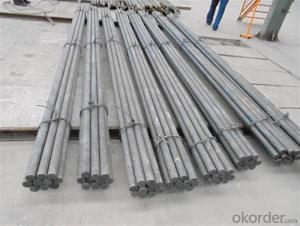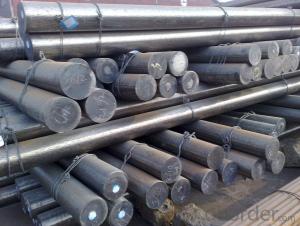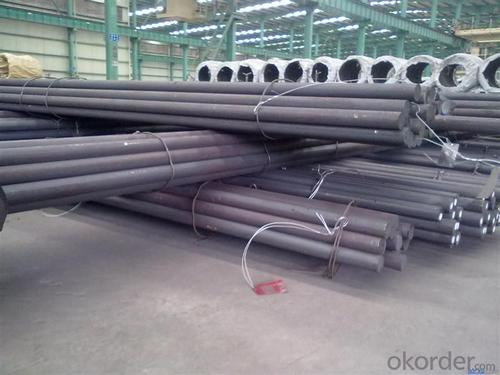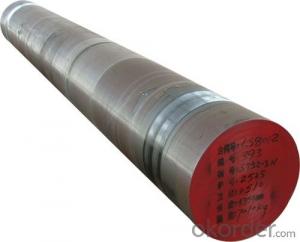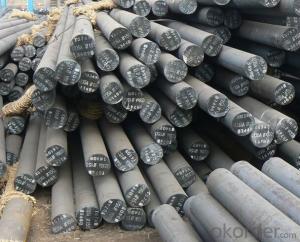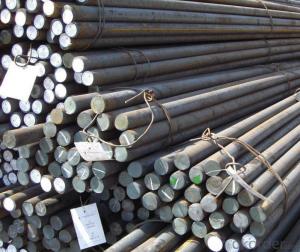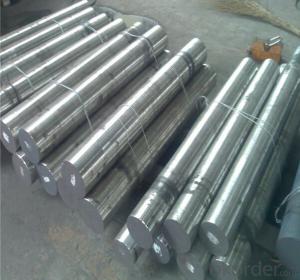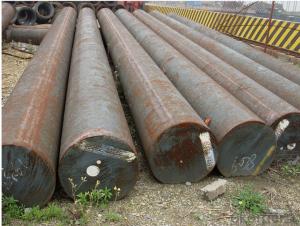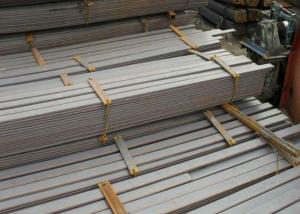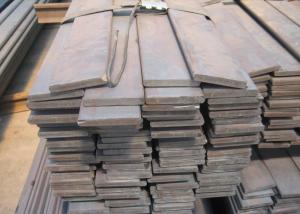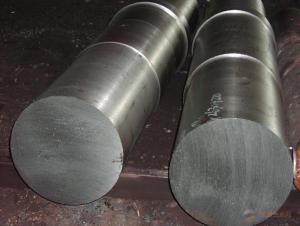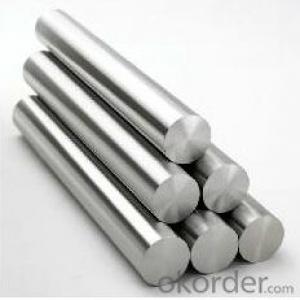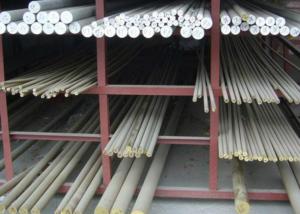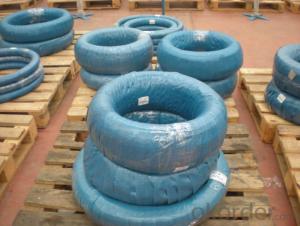AISI 4130, 4130 Steel, 4130 Steel Price
- Loading Port:
- Tianjin
- Payment Terms:
- TT OR LC
- Min Order Qty:
- 25 m.t.
- Supply Capability:
- 50000 m.t./month
OKorder Service Pledge
OKorder Financial Service
You Might Also Like
Specification
AISI 4130, 4130 Steel, 4130 Steel Price
Product Description:
Name | Aisi 4130, 4130 steel, 4130 steel price | |||
Features | 1, Chromium molybdenum alloy steel | |||
2, Supplied in the hardend and tempered condition | ||||
3, Lower carbon content, provide better weldability | ||||
4, Readily machineable in the condition of 18-22 HRC | ||||
Applications | 1, Widely used for oil and gas sector | |||
2, Components such as valve bodies, pumps and fittings | ||||
Sizes | Round bar | Diameter(mm) | Length(mm) | |
Max 800 | Max 9000 | |||
Plate | Thickness(mm) | Width(mm) | Length(mm) | |
Max 800 | Max 2200 | Max 9000 | ||
The above is our regular size, We also can provide customized sizes! | ||||
Packing | 20ft: GW 27T; (5.80mX2.13mX2.18m)
40ft: GW 27T; (11.8mX2.13mX2.18m) | |||
Price | The price will change according to the weight of the steel you need. | |||
Chemical analysis
C | Si | Mn | P≤ | S≤ | Cr | Ni≤ | Mo |
0.28~0.33 | 0.15~0.35 | 0. 40~0.60 | 0.040 | 0.040 | 0.80~1.10 | 0.030 | 0.15~0.25 |
Application:
AISI 4130 is a chromium molybdenum alloy steel specification. It is supplied as round bar commonly in the hardened and tempered condition with a hardness of 18-22 HRc. With a lower carbon content range AISI 4130 provides better weldability, at the expense of through thickness strength, than that of other oil and gas steel grades such as AISI 4140. AISI 4130 alloy steel is readily machineable in the supply condition of 18-22 HRc.
Specification:
Round bar | Diameter(mm) | Length (mm) | |
10~1500 | 2000~5800 | ||
plate/sheet | Thickness(mm) | Width (mm) | Length (mm) |
10~1500 | 80~2300 | 2000~5800 |
Round bar /plate can be supplied as full bar lengths or cut pieces. AISI 4130 ground steel bar can be supplied, providing a quality alloy steel precision ground bar to tight tolerances.
Product Show:
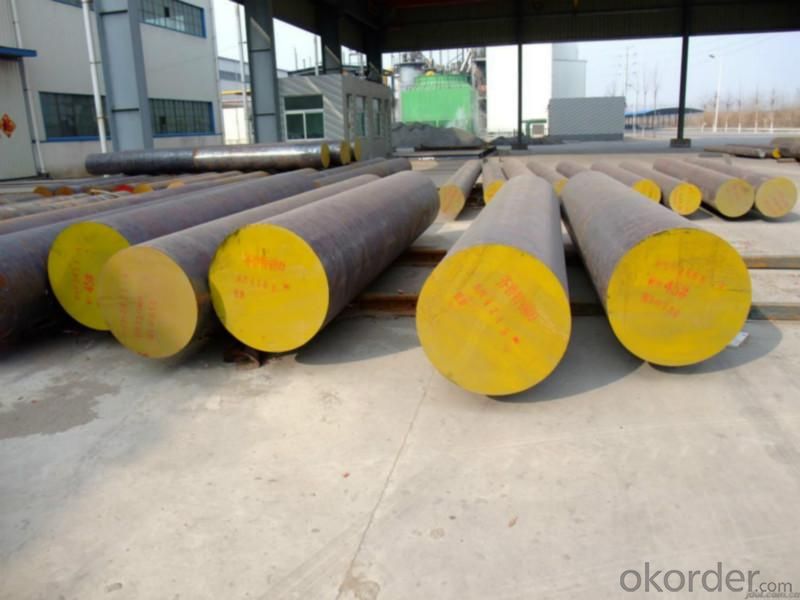
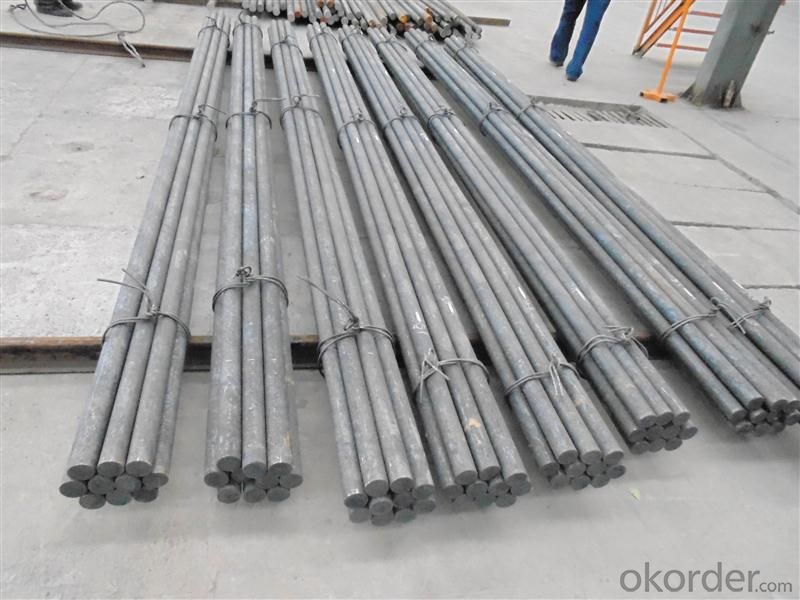
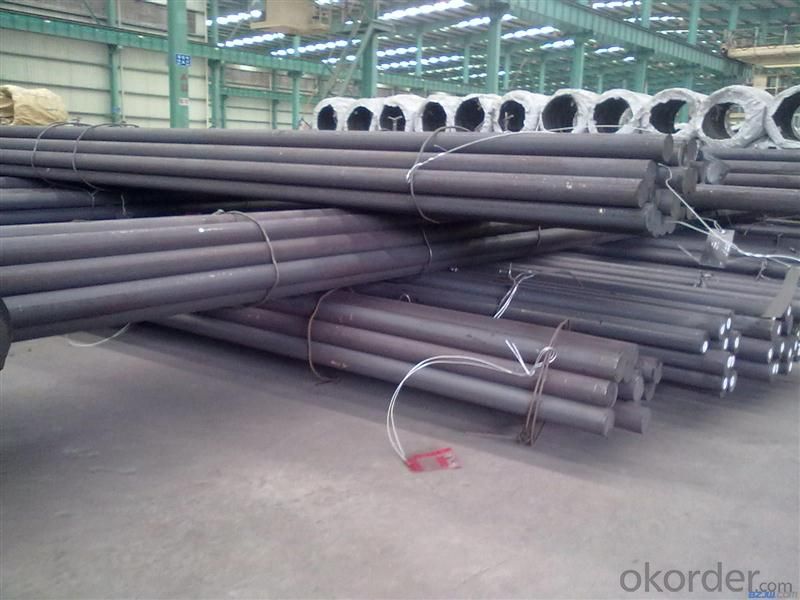
- Q: What are the different methods for improving the toughness of tool steels used in special steel?
- Tool steels used in special steel applications can be toughened through various methods. The goal is to increase their resistance to fracture and ability to absorb energy without becoming brittle. Some techniques for improving the toughness of tool steels include: 1. Alloying: Adding specific alloying elements like chromium, molybdenum, vanadium, and tungsten significantly enhances the toughness. These elements form carbides within the steel matrix, improving toughness. 2. Heat treatment: Proper heat treatment greatly improves toughness. Quenching and tempering are commonly used processes. Quenching rapidly cools the steel, resulting in a hardened structure. Tempering involves reheating and slow cooling to relieve internal stresses and increase toughness. 3. Controlled cooling rates: Optimizing toughness is possible by controlling the cooling rate during heat treatment. Slow cooling allows for a more uniform microstructure, leading to improved toughness. 4. Grain refinement: Refining the grain size enhances toughness. This can be achieved through hot working, controlled rolling, or adding grain refining elements like titanium or zirconium. 5. Surface treatments: Shot peening or nitriding can improve toughness. Shot peening bombards the steel surface with small metal or ceramic particles, creating compressive residual stresses that enhance toughness. Nitriding diffuses nitrogen into the surface, forming a hard and wear-resistant layer. 6. Cryogenic treatment: Subjecting the tool steel to extremely low temperatures for an extended period refines the microstructure and reduces residual stresses, improving toughness. 7. Powder metallurgy: Techniques like hot isostatic pressing or sintering can produce tool steels with improved toughness. Fine powder, high pressure, and temperature result in a more uniform and fine-grained microstructure, increasing toughness. Ultimately, the specific methods selected and combined depend on the tool steel's requirements and intended application. By carefully considering these techniques, manufacturers can enhance the toughness of tool steels for demanding special steel applications.
- Q: What are the different forging techniques used for special steel?
- There are several forging techniques used for special steel, including open die forging, closed die forging, and ring rolling. Open die forging involves shaping the steel between flat dies, allowing for flexibility in the size and shape of the final product. Closed die forging, on the other hand, uses shaped dies to shape the steel into a specific form. Ring rolling is a technique used to produce seamless rings by rolling a heated steel billet between two rotating rolls to achieve the desired shape. These techniques ensure the production of high-quality, customized special steel products for various applications.
- Q: What are the different joining methods used for special steel?
- The different joining methods used for special steel include welding, brazing, soldering, and mechanical fastening.
- Q: How does special steel contribute to the manufacturing of precision components?
- The manufacturing of precision components heavily relies on special steel, which offers a wide range of desirable properties necessary for achieving high levels of accuracy and reliability. To begin with, special steel is renowned for its remarkable strength and durability. This enables precision components to endure the immense stress and load they may encounter during operation. By utilizing special steel, manufacturers can create precision components that can withstand intense forces without warping, deforming, or breaking, ensuring long-lasting performance and reliability. Furthermore, special steel demonstrates excellent resistance to wear. Components manufactured from special steel can endure friction, abrasion, and wear caused by continuous use or contact with other materials. This is especially crucial for precision components, as even the slightest wear or deformation can significantly impact their functionality and accuracy. By employing special steel, manufacturers can guarantee that precision components maintain their shape and integrity, resulting in superior performance and longevity. Moreover, special steel offers outstanding machinability. Its composition and properties make it easier to cut, shape, and form into complex geometries, allowing manufacturers to produce intricate precision components with tight tolerances. This improved machinability facilitates the production of components with precise dimensions, ensuring accuracy and consistency in the final product. Additionally, special steel exhibits excellent resistance to corrosion. Precision components are frequently exposed to harsh environments, chemicals, or moisture, which can lead to corrosion and degradation. However, special steel's corrosion resistance properties help prevent rusting and corrosion, ensuring that precision components remain functional and reliable throughout their lifespan. Lastly, special steel provides thermal stability and resistance to high temperatures. Precision components may come into contact with extreme heat or experience rapid temperature changes during operation. The ability of special steel to withstand these conditions without compromising its strength or dimensional stability is crucial in ensuring the performance and accuracy of precision components in demanding applications. In conclusion, special steel plays a vital role in the manufacturing of precision components by offering exceptional strength, wear resistance, machinability, corrosion resistance, and thermal stability. These properties enable manufacturers to produce precise, high-quality components that meet the stringent requirements of various industries, including aerospace, automotive, electronics, and medical devices.
- Q: Can special steel be used in the food packaging industry?
- Yes, special steel can be used in the food packaging industry. Special steel, such as stainless steel, is commonly used in food processing and packaging due to its resistance to corrosion, durability, and easy cleaning properties. It ensures the hygiene and safety of food products, making it suitable for various applications in the food packaging industry.
- Q: What are the properties of stainless tool steel?
- Stainless tool steel possesses several key properties that make it a popular choice for various applications. Firstly, it has excellent corrosion resistance, making it resistant to rust and staining. This property allows stainless tool steel to maintain its integrity and durability in harsh environments or when exposed to moisture. Additionally, stainless tool steel exhibits high hardness and wear resistance, enabling it to withstand heavy use and retain its sharpness for extended periods. It also has good toughness and impact resistance, ensuring it can handle intense forces without fracturing or breaking. These properties make stainless tool steel suitable for manufacturing tools and components used in industries such as automotive, aerospace, and cutlery.
- Q: What are the different methods of improving the impact toughness of special steel?
- There are multiple ways to increase the impact toughness of special steel. Here are a few commonly utilized techniques: 1. Heat Treatment: Heat treatment is a highly effective method that involves subjecting the steel to specific heating and cooling processes. For example, quenching and tempering can significantly enhance the impact toughness of steel. Quenching rapidly cools the heated steel in a liquid medium like oil or water, while tempering involves reheating the quenched steel to a specific temperature and then slowly cooling it. This process refines the steel's microstructure, making it more resistant to fractures and improving its impact toughness. 2. Alloying: Another method is alloying, which entails adding specific elements to the steel composition. Elements like nickel, chromium, and molybdenum can enhance the toughness of steel by modifying its microstructure and improving its resistance to impact. These alloying elements reduce the formation of brittle phases and enhance the steel's ductility. 3. Grain Refinement: The grain size of steel is crucial in determining its impact toughness. By refining the grain size, the steel can exhibit improved toughness. This can be achieved through techniques like controlled rolling or severe plastic deformation. These methods break down large grains and promote the formation of smaller, more uniform grains, resulting in enhanced toughness. 4. Shot Peening: Shot peening is a surface treatment technique that involves bombarding the steel surface with small metallic or ceramic shots. This process induces compressive stress on the surface, reducing the likelihood of crack propagation and improving impact toughness. 5. Welding Techniques: When welding special steel, specific techniques can be employed to enhance its impact toughness. Preheating the steel before welding and controlling welding parameters like heat input and cooling rate help reduce the formation of brittle phases and improve the toughness of the welded joint. It's important to consider various factors like the desired level of toughness, the steel composition, and the intended application when selecting the appropriate method for improving the impact toughness of special steel. A comprehensive understanding of the steel's properties and specific requirements is crucial in determining the most suitable method for enhancing its impact toughness.
- Q: How is die steel used in metal stamping processes?
- Die steel is used in metal stamping processes as it provides the necessary hardness, durability, and wear resistance required to shape and form metal sheets or components. Die steel dies are used as molds or templates, which are pressed onto the metal to cut, bend, or shape it into the desired form. The high strength and toughness of die steel enable it to withstand the extreme pressures and repetitive impacts of the stamping process, ensuring precise and consistent results.
- Q: What are the main applications of special steel in the defense equipment?
- Special steel is widely used in defense equipment for its exceptional properties such as high strength, durability, and resistance to extreme conditions. Some of the main applications of special steel in defense equipment include the manufacturing of armored vehicles, tanks, submarines, and naval vessels. It is also used in the production of aircraft carriers, fighter jets, and helicopters, where its strength and resistance to corrosion are crucial. Additionally, special steel is utilized in the construction of ballistic protection systems, missile components, and firearms, enhancing their performance and ensuring their reliability in critical defense operations.
- Q: What are the properties of high-strength alloy steel?
- High-strength alloy steel possesses several important properties, including exceptional strength, hardness, and wear resistance. It also exhibits excellent toughness, allowing it to withstand high-stress applications without fracturing or deforming. Additionally, this type of steel often maintains its mechanical properties even at elevated temperatures, making it suitable for use in extreme environments. Finally, high-strength alloy steel typically offers good corrosion resistance, which allows it to withstand exposure to various chemicals and harsh conditions.
Send your message to us
AISI 4130, 4130 Steel, 4130 Steel Price
- Loading Port:
- Tianjin
- Payment Terms:
- TT OR LC
- Min Order Qty:
- 25 m.t.
- Supply Capability:
- 50000 m.t./month
OKorder Service Pledge
OKorder Financial Service
Similar products
Hot products
Hot Searches
Related keywords

